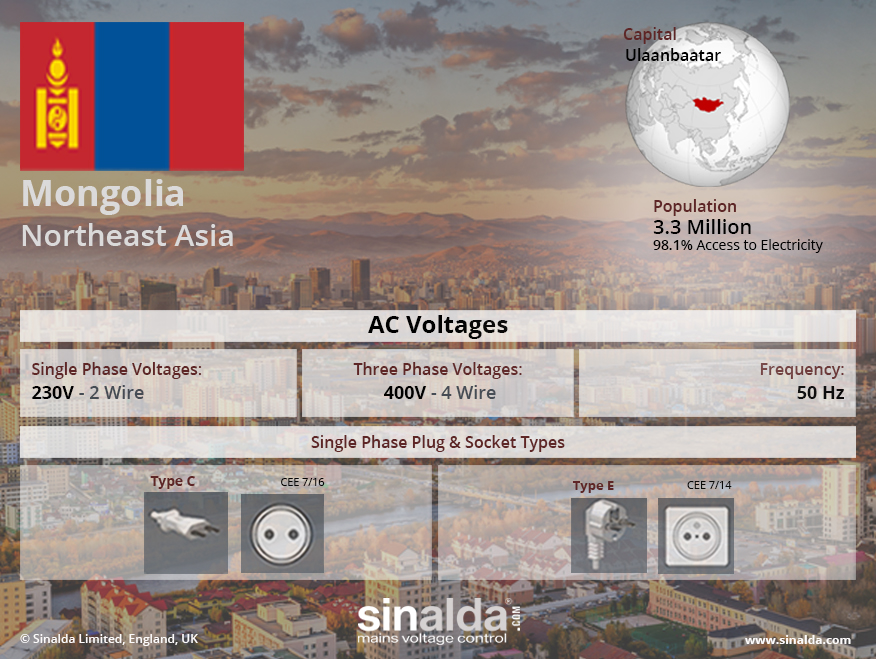Last Updated: 01 November 2022

Copyright 2021 Sinalda. Permission to use this image is granted subject to appropriate credit being given to www.sinalda.com as the source.
Power Quality in Mongolia
Mongolia, a landlocked country in East Asia, has a unique electricity supply network that relies heavily on coal-fired power plants. Despite some challenges, the electricity supply network in Mongolia is relatively reliable and has improved significantly in recent years.
Power Sector in Mongolia
Mongolia’s electricity supply network is relatively underdeveloped compared to other countries in the region, with a total installed capacity of around 1,300 MW as of 2021. Coal-fired power plants account for most of the country’s installed capacity, while renewable energy sources such as wind and solar account for a small but growing percentage.
Mongolia is also home to some of the world’s largest coal mines, which supply coal for both domestic use and export to neighbouring countries such as China. This abundant supply of coal has allowed Mongolia to rely heavily on coal-fired power plants for its electricity supply.
Reliability of the Supply Network
The reliability of Mongolia’s electricity supply network varies depending on the location. The network is relatively reliable in urban areas, with fewer power outages and voltage fluctuations than in rural areas. However, in rural areas, power outages and voltage fluctuations are more common.
To address these challenges, the Mongolian government has implemented several initiatives to improve the reliability of the electricity supply network. For example, the government has invested in expanding transmission and distribution infrastructure and upgrading existing power plants to improve efficiency and reliability. Additionally, the government has sought to diversify the country’s energy mix by promoting the use of renewable energy sources such as wind and solar.
Investing in the Network
Mongolia’s government and utility companies are investing significantly in the country’s electricity sector to address the network’s challenges. These investments include constructing new power plants, expanding transmission and distribution infrastructure, and adopting new technologies such as smart grids and renewable energy sources.
Mongolia has also signed several agreements with neighbouring countries to develop regional power grids, enabling the country to import and export electricity. For example, the Mongolia-China Power Interconnection Project is a regional power grid that aims to improve energy security and reduce greenhouse gas emissions by promoting the development of renewable energy sources.
Conclusion
In conclusion, Mongolia’s electricity supply network has improved significantly in recent years, but it still faces challenges regarding reliability and accessibility, particularly in rural areas. The Mongolian government is taking steps to address these challenges, including investing in new generation capacity, transmission and distribution infrastructure, and new technologies. As Mongolia continues to develop its electricity sector, it will be critical to focus on improving the network’s reliability, expanding access to electricity, and diversifying the energy mix to support sustainable economic growth and development.
Share your Views and Experiences
Every reasonable effort is made to ensure that the information provided above is accurate. No guarantees for the accuracy of the information is made.
So we are able to keep the content updated, and actual on the ground experiences can be shared with others, please feel free to contact us.







